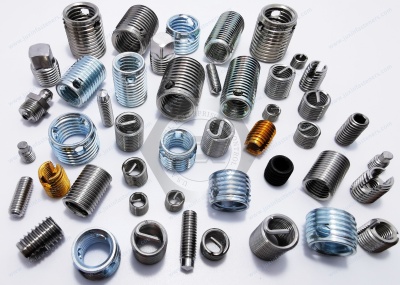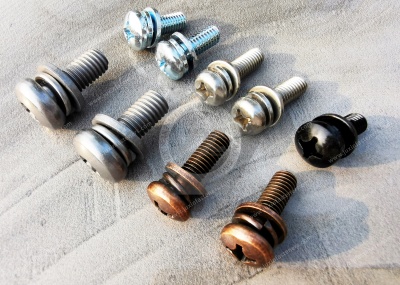Call Us
+86 136 6007 9809
Call Us
+86 136 6007 9809
Aug. 13, 2024
Application solutions for new fasteners for high-tensile and ductile engines
State-of-the-art fastening methods with extremely high tensile strength and maximum flexibility offer new technical potential in designing smaller, lighter engines. Engine optimization for further environmental protection worldwide leads to higher engine efficiency, increasing power densities, increasing combustion pressures, temperatures, and loads, and a continuous reduction in overall engine mass and lower internal friction. But how do fasteners assist the engine industry?
Juxin Fasteners offers a concept that gives bolts the ability to increase preload by up to 45% compared to an identically shaped Grade 10.9 bolt. This ability can be realized in 2 ways. The first is to avoid a continuous increase in the fastener's size in areas requiring a higher preload or to miniaturize the bolt while maintaining a consistent preload progressively. In the second case, the bolt diameter can be reduced by one grade so that a 15.9 U-grade M10 bolt can replace a 10.9-grade M12 bolt.
Fasteners on the engine should be implemented in a manner that includes using high-strength fasteners, using appropriate surface treatment technology, and implementing stringent testing and control measures.
1. Application of high-strength fasteners: Fasteners used in engines usually have high tensile and ductility, such as KXtreme fasteners, whose HE value is less than 0.4, comparable to that of Class 10.9 fasteners. This allows parts to be applied to all automotive components.
Key engine fasteners need to meet a variety of dimensional and form tolerance requirements. The manufacturing process mainly relies on imported equipment, strict control of dimensions, and standardized operating instructions to provide for the main points of the inspection, methods, and acceptance criteria.
2. Surface treatment technology: For high-temperature alloy fasteners, the commonly used local silver-plating method prevents bonding of threaded parts in high-temperature environments to ensure good anti-bonding properties. In the marine environment, engine fasteners need to have good corrosion resistance; the traditional alloy steel cadmium plating, stainless steel passivation, and other methods can not meet the demand; new surface treatments such as coating molybdenum disulfide, zinc plating nickel alloy, and different techniques are gradually being applied.
3. Detection and control measures: fastener size and shape tolerance testing must be selected with the required precision equipment, regular confirmation of measuring tools and measuring equipment, and calibration to avoid inspection data distortion. Heat treatment is an essential process to obtain good mechanical properties, and there is a need to use a continuously controlled atmosphere mesh belt furnace for sealing, advanced atmosphere protection, temperature, and other automatic control and alarm function parameters. Thread rolling process control is used to ensure the quality of thread processing, that the thread rolling processing of material utilization rate is high, and that the production efficiency is higher than that of the machining thread.
Stainless Steel Helical Inserts: Also known as Heli-Coil inserts, these inserts have coils that expand once installed to anchor the insert securely. All have a prong for ease of installation. An installation tool grips the prong and reduces the coil diameter, enabling the insert to fit in tapped holes. Remove the prong to insert the screw. Installation requires a drill bit, a helical insert tap, an installation tool, and a prong break-off tool. Inserts that meet DIN 8140 adhere to international standards for dimensions.
Stainless Steel Helical Inserts for Particle-Free Environments: Made of Nitronic 60 stainless steel, these inserts prevent the screw from binding or sticking without any coating or lubricant that could contaminate particle-free environments. Also known as Heli-Coil inserts, they have coils that expand once installed to anchor the insert securely. All have a prong for ease of installation. An installation tool grips the prong and reduces the coil diameter, enabling the insert to fit in tapped holes. Remove the prong to insert the screw. Installation requires a drill bit, a helical insert tap, an installation tool, and a prong break-off tool.
Lubricated Stainless Steel Helical Inserts for Dissimilar Metals: Eliminating the need for primer, these inserts are coated to resist corrosion when installed in different materials. They also prevent the screw from sticking or binding in the insert during installation. Also known as Heli-Coil inserts, they have coils that expand once installed to anchor the insert securely. All have a prong for ease of installation. An installation tool grips the prong and reduces the coil diameter, enabling the insert to fit in tapped holes. Remove the prong to insert the screw. Installation requires a drill bit, a helical insert tap, an installation tool, and a prong break-off tool. Inserts that meet DIN 8140 adhere to international standards for dimensions.
Stainless Steel Screw-Locking Helical Inserts for Particle-Free Environments: Made of Nitronic 60 stainless steel, these inserts prevent the screw from binding or sticking without any coating or lubricant that could contaminate particle-free environments. Once the screw is installed, a distorted thread grips the screw to resist loosening. Also known as Heli-Coil inserts, they have coils that expand once installed to anchor the insert securely. All have a prong for ease of installation. An installation tool grips the prong and reduces the coil diameter, enabling the insert to fit in tapped holes. Remove the prong to insert the screw. Installation requires a drill bit, a helical insert tap, an installation tool, and a prong break-off tool.
In summary, the fasteners on the engine should be practiced using high-strength fasteners, appropriate surface treatment technology, and strict testing and control measures to ensure the engine's safety and performance.
18-8 Stainless Steel Key-Locking Inserts: Made of stainless steel, these inserts have good corrosion resistance. Drive the keys into the surrounding material for a more secure hold than thread-locking inserts. Use them to repair or change threads in soft metals such as aluminum. Inserts may be mildly magnetic. They’re comparable to inserts. Installation requires a drill bit, a standard tap, an installation tool, and a hammer.
Inserts with a thin wall are often used in small holes or near the edge of a workpiece.
Choose inserts with a thick wall for greater strength than thin-wall inserts or to fill a large hole.
Inserts with an extra-thick wall are stronger than thick- and thin-wall inserts. Use them to reduce the size of tapped holes.
Black-Phosphate Steel Key-Locking Inserts: The black phosphate finish provides mild corrosion resistance. Drive the keys into the surrounding material for a more secure hold than thread-locking inserts. Use them to repair or change threads in soft metals such as aluminum. They’re comparable to inserts. Installation requires a drill bit, a standard tap, an installation tool, and a hammer.
Inserts with a thin wall are often used in small holes or near the edge of a workpiece.
Choose inserts with a thick wall for greater strength than thin-wall inserts or to fill a large hole with stripped threads.
Inserts with an extra thick wall are stronger than thick- and thin-wall inserts. Use them to reduce the size of tapped holes.
Metric Clip-On Nuts for Flanged Edges: Slide these nuts on the edge of a panel and position them by hand. Also known as G-style clip-on nuts, they have threads that float inside the retainer, so you can install a bolt at a slight angle to align off-center parts. A zinc plating provides corrosion resistance in wet environments.


Cylinder head bolts, flywheel bolts, main bearing cover bolts, and connecting rod bolts are very important engine fasteners.
The underlying assumption for all the connections was continuous preload before and during the study. A related research resulted in component optimization by decreasing the fastener diameter by one level. In the study, the initial assumption that smaller bolts were applied in light engines originally had only one advantage.
A focus was placed on the two study areas described below, with the first optimization focusing on the engine block design. Usually, the arrangement around the cylinder liner is limited and compact, which results in a small coolant flow cross-section around the liner and thus hinders heat transfer. Smaller bolt diameters allow for a more extensive root radius at the bottom of the water jacket, which creates a larger cooling area of influence and reduces component pressure. This means that more heat can be transferred from the cylinder bores to the cooling system with lower pressures and that the cooling system is optimized by a smaller water pump, thus reducing the power loss of the engine.
Based on tests on steering knuckles, it was found that each steering knuckle saves the system approximately 675 g. Juxin Fasteners uses these specially designed bolt heads to further reduce the bolt mass. Combined with the hexagonal and hexagonal fastening method, this minimizes the bolt head mass by more than 20 percent compared to standard hexagonal bolts, according to DIN 1665.
Mil. Spec. Steel Pan Head Phillips Screws: Choose these pan head screws for their adherence to strict military standards for material and construction. They're cadmium-plated to resist corrosion in wet environments. Length is measured from under the head.
Steel Decorative Round Head Phillips Screws: A tall, domed head provides a finished appearance. These screws have a zinc plating for corrosion resistance in wet environments. Length is measured from under the head.
Metric Thread-Locking Pan Head Phillips Screws: These screws have a nylon patch bonded to the threads that add friction to prevent loosening from vibration. Made from 18-8 stainless steel, they have good chemical resistance and may be mildly magnetic. They're passivated for added protection against oxidation and corrosion. Length is measured from under the head.
Metric High-Strength Steel Heavy Hex Head Screws for Structural Applications: Designed for construction and exterior building applications, these metric screws are often used to join I-beams and scaffolding. Their partial threading leaves an unthreaded portion substantial enough to stand up to the sideways forces of joints. Made of Class 10.9 steel, these screws are at least 25% stronger than our medium-strength steel heavy hex head screws. They also have a hot-dipped galvanized finish that makes them ten times more corrosion-resistant than zinc plating so that they won't rust in wet environments. However, this finish is thicker than others, so it should be used with DIN 6916 structural washers and DIN 6915 structural hex nuts. All meet ISO 7412 (formerly DIN 6914), an international standard for screw dimensions.
High-Strength Metric Class 10.9 Steel Flanged Hex Head Screws: Choose these Class 10.9 steel screws for high-stress applications, such as valves, pumps, motors, and automotive suspension systems. They are at least 25% stronger than medium-strength steel screws. The flange distributes pressure where the screw meets the surface, eliminating the need for a separate washer. Head height includes the flange. Length is measured from under the flange.
Black-phosphate steel screws are mildly corrosion-resistant in dry environments. Zinc yellow-chromate plated steel screws resist corrosion in wet environments.
Screws that meet ISO 898-1 or SAE J1199 comply with specifications and testing requirements for material quality. Screws that meet ASME B18.2.3.9M or DIN 6921 comply with specifications for dimensional standards.
Bolts for internal engine applications with a strength of 1,700 MPa and bolts for external engine applications with a strength of 1,500 MPa can be used. They are more sensitive to hydrogen embrittlement corrosion cracking than Grade 10.9 fasteners.For high-quality High-Strength Metric Class 10.9 Steel Flanged Hex Head Screws and professional technical support, please get in touch with us at adelajonly@gmail.com or visit our website at https://www.juxinfasteners.com.
Contact Us
Tel.:
+86 020 8621 0320
+86 020 3121 6067
Technical Support:
Navigation
SEND INQUIREY